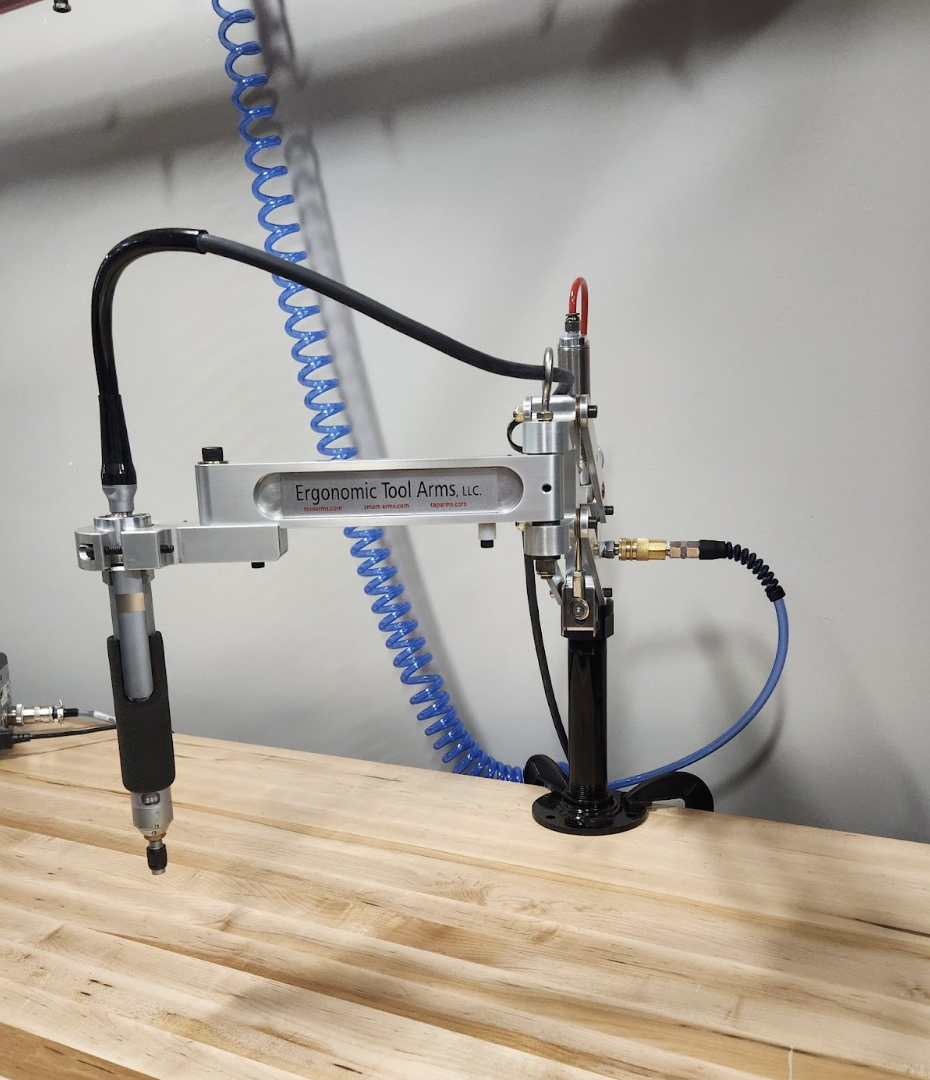
The need to apply torque accurately and consistently across various tasks is critical, but doing so manually can lead to strain and injury over time. This is where torque arms become invaluable tools. These devices not only ensure the accurate application of torque but also play a crucial role in improving workplace ergonomics, thereby reducing the risk of injury and enhancing overall productivity.
Understanding Torque Arms
Torque arms are mechanical devices designed to absorb the reaction force generated when a torque tool is used. Essentially, they provide the necessary support to torque tools, allowing operators to apply the required torque to fasteners without exerting excessive force. This not only helps in achieving precise torque application but also reduces the physical strain on workers, making them essential in various industrial settings.
Torque arms find application in industries ranging from automotive manufacturing to aerospace and electronics assembly. Their primary function is to stabilize the torque tool, preventing any unwanted movement and ensuring that the torque is applied evenly and accurately. This is particularly important in industries where precision is paramount, as even slight deviations in torque can lead to product failures or safety issues.
Benefits of Torque Arms
Ergonomics
One of the most significant benefits of torque arms is their contribution to workplace ergonomics. Repetitive tasks that require the application of torque can lead to musculoskeletal injuries, particularly in the arms, shoulders, and back. Torque arms help to mitigate this risk by supporting the weight of the torque tool and absorbing the reaction forces. This reduces the physical strain on workers, allowing them to perform their tasks more comfortably and with less risk of injury.
Precision
Accuracy is crucial in torque application. By stabilizing the torque tool, torque arms help ensure that the applied torque is consistent with the desired specifications. This is especially important in industries where precise torque values are critical to the integrity and safety of the final product. Torque arms minimize the risk of under-torquing or over-torquing, which can lead to fastener failure or damage to the components being assembled.
Safety
Safety is a top priority in any industrial setting, and torque arms contribute to a safer work environment by preventing over-torquing and under-torquing. Over-torquing can cause fasteners to strip or break, leading to potential equipment failures and safety hazards. Under-torquing, on the other hand, can result in loose fasteners that compromise the structural integrity of the assembled product. Torque arms help mitigate these risks by ensuring that the correct amount of torque is applied every time.
Types of Torque Arms
Articulating Torque Arms
Articulating torque arms are designed for flexibility and reach, making them ideal for use in diverse workspaces. These arms can move in multiple directions, allowing operators to apply torque in hard-to-reach areas or at different angles. Articulating torque arms are particularly useful in assembly processes where the torque tool needs to be positioned in various orientations.
Rail-Mounted Torque Arms
Rail-mounted torque arms are fixed-position arms that are typically installed along assembly lines or workstations. These arms provide a stable and consistent platform for torque application, making them ideal for repetitive tasks where the torque tool needs to be applied at a specific location repeatedly. The stability of rail-mounted torque arms ensures that the torque application remains consistent across multiple cycles.
Pneumatic Torque Arms
Pneumatic torque arms are powered by compressed air, adding an extra layer of efficiency to the torque application process. These arms are particularly useful in high-volume assembly environments where speed and precision are critical. The pneumatic power allows for smooth and consistent torque application, reducing the physical effort required by the operator.
Choosing the Right Torque Arms
Selecting the right torque arm for your application involves assessing your specific torque needs and workspace requirements. Factors to consider include the type of torque tool being used, the amount of torque that needs to be applied, and the layout of the workspace. It’s essential to choose the one that can accommodate the size, weight, and reach of your torque tool while also fitting comfortably within your work environment.
Maintenance and Care Tips
To ensure longevity and optimal performance, regular maintenance is crucial. This includes routine inspections to check for signs of wear and tear, as well as regular lubrication of moving parts. Ensuring that all components are in good working condition will help prevent unexpected breakdowns and extend the life of the torque arm.

Torque Arms from Air Components
Torque arms are indispensable tools in industrial settings, offering significant benefits in terms of ergonomics, precision, and safety. By reducing physical strain on workers and ensuring accurate torque application, they contribute to a more efficient and productive work environment. Investing in torque arms is a smart choice for any industrial operation looking to enhance both worker safety and product quality.
Consider exploring the options available through Air Components. Our range of high-quality torque arms can help you achieve the ergonomic and precise torque application your operation needs. Contact us today to learn more about our selection of tools.